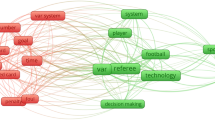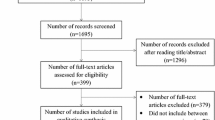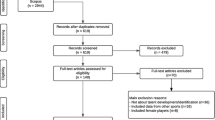Abstract
Among the central arguments of the bestselling book and movie Moneyball was the allegation that the labor market for baseball players was inefficient in 2002. At that time, Billy Beane and the Oakland Athletics used observations made by statistical analysts to exploit this market inefficiency, and acquire productive players on the cheap. Econometric analysis published in 2006 and 2007 confirmed the presence of an inefficient market for baseball players, but left open the question of to what extent, and how quickly, a market correction would occur. We find that this market had in fact already corrected by 2006, and moreover argue that the perceived market response to Moneyball in 2004 is properly viewed as part of a more gradual longer-term trend. In addition, we use official payroll data from Major League Baseball to refute a previous observation that the relationship between team payroll and performance has tightened since the publication of Moneyball.



Similar content being viewed by others
Notes
This paper is adapted and updated from an analysis in our forthcoming book, The Sabermetric Revolution: Assessing the Growth of Analytics in Baseball, to be published in February 2014 by the University of Pennsylvania Press, Baumer and Zimbalist [2014].
OBP is equal to (hits+walks+hit by pitch)/(at-bats+walks+hit by pitch+sacrifice flies).
SLG is equal to (1 × singles+2 × doubles+3 × triples+4 × home runs)/at-bats.
To be precise, under the most recent collective bargaining agreement, the 22 percent of players between 2 and 3 years in the majors with the most service time also qualify for salary arbitration. In previous agreements, 17 percent of such players qualified.
Simple linear models for Eye, Bat, or Power as a function of Year yield P-values for the F-statistic of 0.007, 0.493, and 0.497, respectively. Although the downward trend in the value of Eye appears to be statistically significant by this measure, there do not appear to be statistically significant structural changes within the time divisions we investigated. We tested this by adding indicator variables for each time period, along with interaction terms between those indicators and Year, to a multiple regression model for each statistic as a function of Year. A nested F-test between these models and the simple linear regression model yielded P-values of 0.859, 0.697, and 0.127, respectively. A Chow test would similarly find little evidence of structural changes.
Because the salary figures in the Lahman database are collected unofficially by volunteers, there are some players who have no recorded salary in a particular year.
Over the 1998–2002 period, the average values for TPA, Eye, Bat, and Power among the 1,748 players in the data set were 447, 0.091, 0.272, and 1.59, respectively. If such a player were a free agent outfielder then his salary for the year 2000 predicted by our model is $2,424,780. However, if that player’s walk rate was 0.101 then his predicted salary becomes $2,460,973, an increase of $36,193. The corresponding difference for a free agent outfielder in 2010 with the same statistics would be $124,655. Since we are using year fixed effects, this result controls for baseball inflation over the period.
The P-values for the F-statistic of the simple linear model for Eye, Bat, or Power as a function of Year are 0.089, 0.098, and 0.062, respectively. The corresponding P-values for a nested F-test that includes periodized interaction terms are 0.27, 0.846, 0.007. In particular, there is evidence that Power was compensated more highly from the 1998–2007 periods than in the other years.
This point is elaborated in Baumer and Zimbalist [2014, Ch. 1].
This growth in the return to all skills should not be surprising, given the sustained increase in average salaries between 1985 ($370,000) and 2012 ($3.2 million).
It is also interesting to observe that the return to power was highest during the apex of the steroid power boom. While an economist might scratch her head at this outcome (thinking that the plethora of home runs would lower the relative value of the same), it appears that the steroid power boom produced both an ownership and fan fascination with the long ball only serving to increase its market value.
Equivalently, each team’s payroll divided by the league’s average payroll in that season.
LRD payroll stands for MLB’s Labor Relations Department measurement of payroll. LRD payroll differs from the CBT (competitive balance tax) and players’ association payroll in its treatment of benefits, deferred salary, and discount rates.
Again, a simple linear model for R2 in the payroll model as a function of time is not statistically significant at the 5 percent level. The increase in R2 between 1985–1997 and 1998–2002 may be a function of widening revenue inequality across teams, and the Yankees’ remarkable string of success during the latter period.
References
Baumer, Ben, and Andrew Zimbalist 2014. The Sabermetric Revolution: Assessing the Growth of Analytics in Baseball. Philadelphia: University of Pennsylvania Press.
Hakes, J.K., and R.D. Sauer . 2006. An Economic Evaluation of the Moneyball Hypothesis. The Journal of Economic Perspectives, 20 (3): 173–185.
Hakes, J.K., and R.D. Sauer . 2007. The Moneyball Anomaly and Payroll Efficiency: A Further Investigation. International Journal of Sport Finance, 2 (4): 177–189.
Lahman, S . 2013. Sean Lahman’s Baseball Database, http://www.seanlahman.com/baseball-archive/statistics/ (accessed October 26, 2013).
Lewis, M. 2003. Moneyball: The Art of Winning an Unfair Game. New York: WW Norton & Company.
R Core Team 2012. R: A Language and Environment for Statistical Computing. R Foundation for Statistical Computing. Vienna, Austria: R Core Team.
Sarkar, D. 2008. Lattice: Multivariate Data Visualization with R. New York: Springer.
Author information
Authors and Affiliations
Rights and permissions
About this article
Cite this article
Baumer, B., Zimbalist, A. Quantifying Market Inefficiencies in the Baseball Players’ Market. Eastern Econ J 40, 488–498 (2014). https://doi.org/10.1057/eej.2013.43
Published:
Issue Date:
DOI: https://doi.org/10.1057/eej.2013.43




